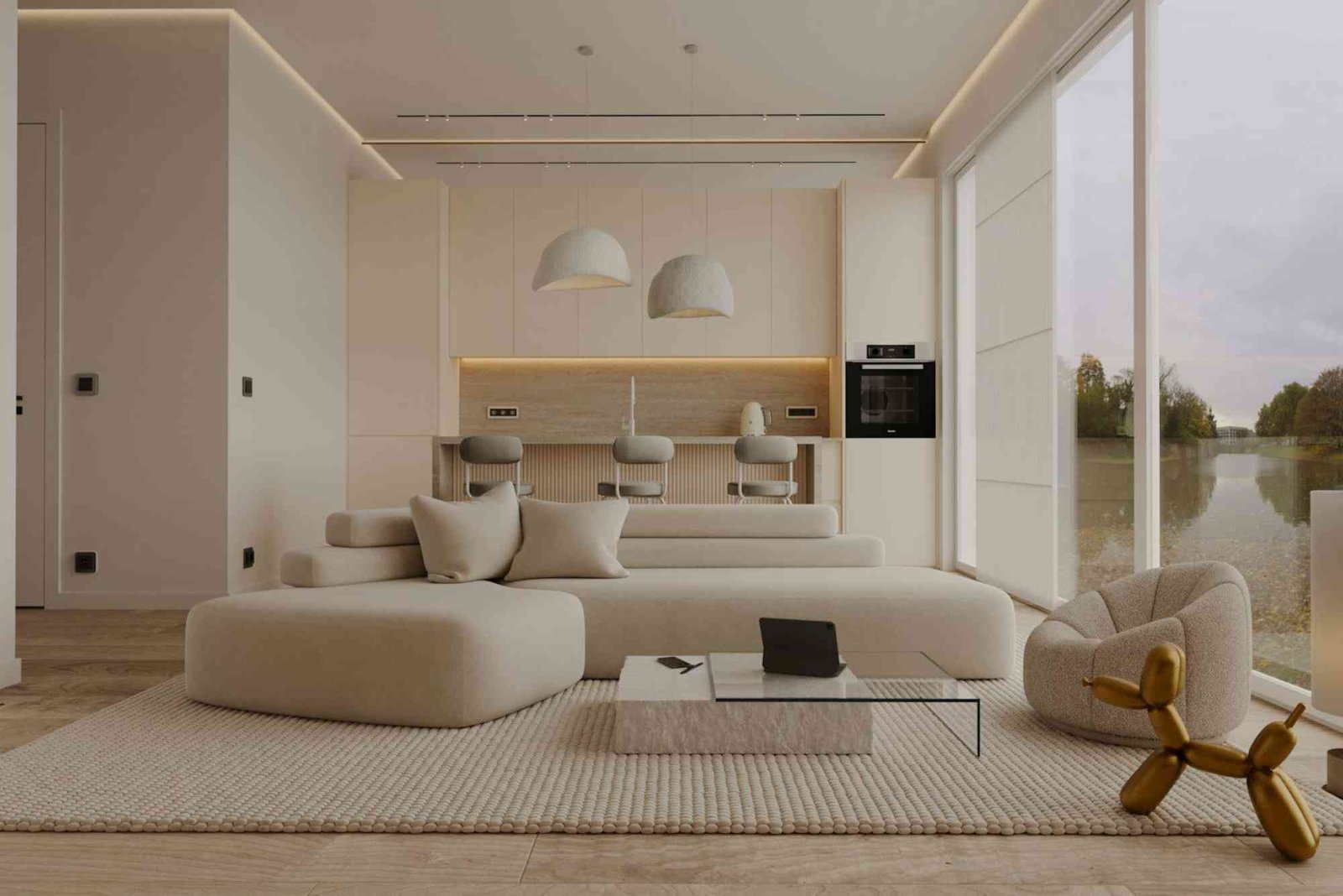Introduction
Designing a room is more than arranging furniture and picking paint colors. It’s about creating a space that reflects your personality, meets your functional needs, and evokes comfort every time you step inside. Whether you’re planning a complete home makeover or simply refreshing one corner, understanding the essential steps to room design helps ensure harmony, functionality, and beauty. From establishing a clear vision to final styling, each step contributes to a cohesive and inviting result.
Understanding the Purpose of the Room
Every great design begins with purpose. Before buying furniture or choosing fabrics, consider how you want to use the space. A bedroom should promote rest and relaxation, a living room should encourage connection, and a workspace should enhance focus. Ask yourself questions like: Who will use this room? What activities will take place here? How much natural light does it receive? Understanding these basics guides all future design decisions.
Once you’ve defined the purpose, think about the feeling you want to create. Cozy? Minimalist? Energetic? Your emotional goals determine choices in color, texture, and lighting. This initial clarity becomes your design compass, keeping you on track throughout the project.
Establishing a Cohesive Vision
The next step in room design is developing a cohesive visual theme. Gather inspiration from magazines, online galleries, or a Bedroom Stitch Room concept you admire. Use Pinterest boards or mood collages to collect ideas, color palettes, furniture styles, and materials. As you refine your vision, focus on balance — a blend of personal taste and timeless appeal.
You don’t need to stick rigidly to one style; modern, bohemian, rustic, or minimalist can blend beautifully with personal touches. The key is harmony. Even contrasting elements like metal and wood can coexist when balanced through tone and proportion.
Planning the Layout and Flow
Once the vision is clear, move to layout planning. A room’s layout determines its comfort and practicality. Start by measuring the dimensions and marking windows, doors, and electrical outlets. Use a rough sketch or digital tool to test furniture placements. Ensure that pathways remain clear and natural movement isn’t blocked by bulky pieces.
In a living area, arrange seating for easy conversation. In a Stitch Room Design, ensure the workspace is near natural light, while the storage stays accessible yet discreet. Always consider scale — large furniture in a small room feels crowded, while undersized pieces make a big room feel empty. Balance visual weight by distributing furniture evenly around the space.
Choosing a Functional and Aesthetic Color Scheme
Color is one of the most powerful design tools. It sets the mood, defines style, and even affects how large or small a room feels. When deciding on colors, begin with your emotional intent. Soft neutrals and pastels create a relaxing atmosphere, while bold hues add drama and energy.
A good rule of thumb is the 60-30-10 principle: 60% dominant color (walls), 30% secondary color (furniture or upholstery), and 10% accent color (decor or accessories). For instance, a bedroom might feature cream walls, gray furniture, and gold accents. Don’t overlook how lighting — both natural and artificial — affects your chosen shades. Test paint samples under different conditions before committing.
Selecting Furniture with Purpose
Furniture is the backbone of any design. Choose pieces that suit your room’s purpose and complement your style vision. Start with essential items — the bed in a bedroom, the sofa in a living room, or the desk in a home office. Once the main furniture is selected, layer in secondary pieces like side tables, shelves, or ottomans that enhance comfort and storage.
Avoid overcrowding. Negative space allows the eye to rest and helps highlight key elements. Always consider functionality alongside aesthetics. A beautiful chair that’s uncomfortable or a sleek coffee table that’s too low can disrupt the room’s usability.
Enhancing Ambiance with Lighting
Lighting transforms how a room feels. Proper illumination highlights design features, creates depth, and sets the tone for different moods. Ideally, every room should include three layers of lighting: ambient (general), task (functional), and accent (decorative).
Ambient lighting might come from ceiling fixtures, while task lighting can include reading lamps or under-cabinet lights. Accent lighting, such as wall sconces or LED strips, adds visual interest. In a Essential Steps to Room When Design, warm lighting promotes relaxation, while in a workspace, bright white light enhances productivity. Don’t forget the power of dimmers — they offer flexibility for various times of day and activities.
Adding Texture and Materials
Texture adds richness and comfort to a room. Mixing materials like wood, linen, metal, and glass keeps the space from feeling flat. Rugs, cushions, curtains, and throws provide tactile warmth, while smooth surfaces like marble or glass offer contrast.
Layering textures makes a room visually engaging. For example, pair a velvet sofa with a jute rug or a wooden table with ceramic décor. Texture also helps in defining zones — plush fabrics in lounging areas and sleek finishes in work zones create subtle functional separations.
Personalizing with Art and Decor
Once the main structure is complete, it’s time to infuse personality. Art and décor turn a house into a home. Choose artwork, photos, or wall hangings that resonate with your story. Incorporate personal mementos, plants, or handcrafted items to bring warmth and authenticity.
Vary the heights and scales of decorative pieces for visual rhythm. A gallery wall can serve as a stunning focal point, while a large mirror amplifies space and light. Remember, restraint is key — overdecorating can overwhelm.
Considering Sustainability and Durability
Modern design increasingly values sustainability. Choose eco-friendly materials, energy-efficient lighting, and furniture built to last. Natural materials like bamboo, cork, and reclaimed wood are beautiful and environmentally conscious choices. Durable design saves resources and money in the long run.
Additionally, select quality over quantity. A few well-made pieces can anchor your design better than many cheap alternatives. Always verify manufacturing sources and look for certifications when possible.
Maintaining Balance and Scale
Proportion and balance ensure visual harmony. When arranging furniture, think about symmetry — a balanced layout feels calm and pleasing. Combine tall and low elements, large and small accents, to create depth.
If one side of the room feels heavy, add a visual counterweight such as a plant, lamp, or painting on the opposite side. The goal is a natural equilibrium that feels effortless yet refined.
The Role of Technology in Modern Design
Technology seamlessly integrates into contemporary interiors. Smart lighting, automated blinds, and digital thermostats enhance convenience while maintaining aesthetic coherence. Hidden charging ports or wireless speakers offer function without clutter.
A Stitch Room Design often includes modern gadgets for comfort and creativity, blending traditional craftsmanship with innovative tools. Smart design embraces technology as a silent partner that supports lifestyle and elegance.
Styling and Finishing Touches
The final stage of room design is styling. This step transforms a good space into a remarkable one. Adjust cushions, align décor pieces, and ensure consistency in tone and proportion. Use greenery — real or artificial — to inject freshness. Even the scent of a room, through candles or diffusers, contributes to ambiance.
Step back and assess the overall flow. Does every piece serve a purpose? Does the room invite relaxation or creativity as intended? Fine-tune until it feels right.
Common Mistakes to Avoid
Many design challenges arise from common mistakes — rushing decisions, ignoring lighting, or neglecting scale. Avoid buying furniture before measuring the space. Don’t choose paint before testing it in different lighting conditions. Balance beauty with function, and remember that simplicity often creates the most lasting impression.
Designing a room is both art and science — a creative journey that merges vision, purpose, and practicality. By following these essential steps to room design, you can craft spaces that reflect who you are and what you value. Start small, trust your instincts, and let every detail express your individuality.
For more inspiration, explore our guide on Bedroom Stitch Room ideas or dive deeper into Stitch Room Design techniques that merge creativity with comfort.
Ready to bring your dream space to life? Start implementing these steps today and watch your room transform into a reflection of your personality and lifestyle. Related resource: stitch room design
Frequently Asked Questions
What are the first steps in room design?
Begin by defining the room’s purpose and the feeling you want to create. Then plan layout, lighting, and color schemes before selecting furniture.
How can I design a room on a budget?
Focus on essentials, repurpose existing items, and add affordable accents like cushions, rugs, or wall art. Smart DIY choices can make a big impact.
Which colors make a room look bigger?
Light shades like white, beige, or soft gray reflect light and create the illusion of space. Pair them with mirrors for added effect.
How important is lighting in room design?
Lighting shapes mood and function. Use a mix of ambient, task, and accent lighting to achieve balance and flexibility.
What makes a room design timeless?
Simplicity, neutral tones, natural materials, and quality furniture ensure that your design remains elegant and relevant for years.




